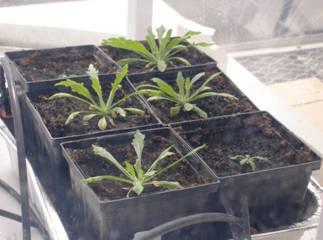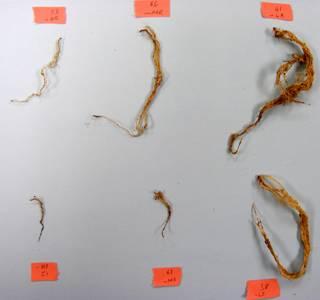Weed Science
Ozone effects on glyphosate-resistant and glyphosate-susceptible horseweed
Abstract of paper Grantz, Shrestha and Vu. 2008. Weed Science 56:224-230.
Early Vigor and Ozone Response in Horseweed (Conyza canadensis) Biotypes Differing
in Glyphosate Resistance
David Grantz, Anil Shrestha, and Hai-Bang Vu
Horseweed has become increasingly difficult to control in the San Joaquin Valley (SJV) of California. Resistance to glyphosate may not fully explain the quasi-invasive behavior of this native species. We contrast glyphosate-resistant (GR) and glyphosate-susceptible (GS) horseweed biotypes for vigor during the vegetative stage and for resistance to ozone (O3). The SJV is impacted by O3 air pollution, which could be a factor in competitiveness of GR vs. GS. Both biotypes were exposed during the seedling and vegetative stages of rosette development to a range of O3 concentrations in greenhouse exposure chambers. Leaf injury was evaluated visually and biomass production and allocation destructively. In O3-free air, the GR biotype exhibited fewer foliar lesions, more vigorous growth, and 40% greater biomass than the GS biotype. The slope of the response to O3 was greater in the GR than in the GS biotype, implying greater relative sensitivity to O3. This was due to greater vigor at low O3, as the biotypes performed similarly at high O3. The competitive advantage of the GR biotype may be reduced in polluted environments. There appeared to be no linkage between the evolution of resistances to O3 and to glyphosate.

